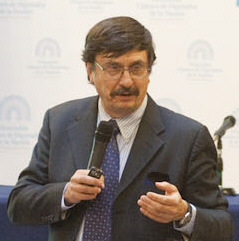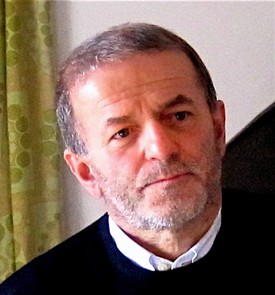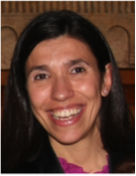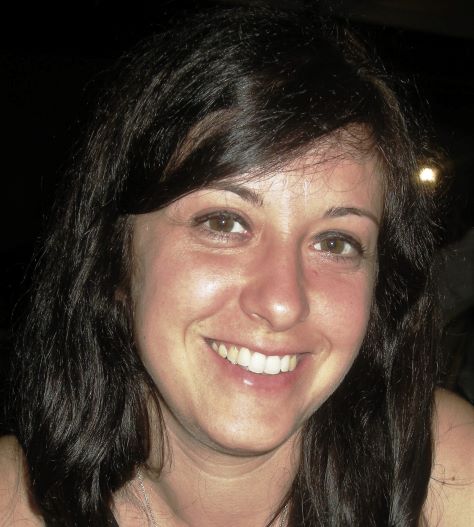Studying at the University of Verona
Here you can find information on the organisational aspects of the Programme, lecture timetables, learning activities and useful contact details for your time at the University, from enrolment to graduation.
Academic calendar
The academic calendar shows the deadlines and scheduled events that are relevant to students, teaching and technical-administrative staff of the University. Public holidays and University closures are also indicated. The academic year normally begins on 1 October each year and ends on 30 September of the following year.
Course calendar
The Academic Calendar sets out the degree programme lecture and exam timetables, as well as the relevant university closure dates..
| Period | From | To |
|---|---|---|
| I semestre | Oct 1, 2013 | Jan 31, 2014 |
| II semestre | Mar 3, 2014 | Jun 13, 2014 |
| Session | From | To |
|---|---|---|
| Sessione straordinaria | Feb 3, 2014 | Feb 28, 2014 |
| Sessione estiva | Jun 16, 2014 | Jul 31, 2014 |
| Sessione autunnale | Sep 1, 2014 | Sep 30, 2014 |
| Session | From | To |
|---|---|---|
| Sessione autunnale | Oct 9, 2013 | Oct 9, 2013 |
| Sessione straordinaria | Dec 12, 2013 | Dec 12, 2013 |
| Sessione invernale | Mar 12, 2014 | Mar 12, 2014 |
| Sessione estiva | Jul 16, 2014 | Jul 16, 2014 |
| Period | From | To |
|---|---|---|
| Vacanze Natalizie | Dec 22, 2013 | Jan 6, 2014 |
| Vacanze di Pasqua | Apr 17, 2014 | Apr 22, 2014 |
| Festa del S. Patrono S. Zeno | May 21, 2014 | May 21, 2014 |
| Vacanze Estive | Aug 11, 2014 | Aug 15, 2014 |
Exam calendar
Exam dates and rounds are managed by the relevant Science and Engineering Teaching and Student Services Unit.
To view all the exam sessions available, please use the Exam dashboard on ESSE3.
If you forgot your login details or have problems logging in, please contact the relevant IT HelpDesk, or check the login details recovery web page.
Should you have any doubts or questions, please check the Enrollment FAQs
Academic staff
Cecchi Franco
 franco.cecchi@univr.it
franco.cecchi@univr.it
 045 802 7964 - 7965
045 802 7964 - 7965

Monaco Ugo Luigi
 hugo.monaco@univr.it
hugo.monaco@univr.it
 045 802 7903; Lab: 045 802 7907 - 045 802 7082
045 802 7903; Lab: 045 802 7907 - 045 802 7082
Spena Angelo
 angelo.spena@univr.it
angelo.spena@univr.it
 045 683 5623
045 683 5623
Ugolini Simone
 simone.ugolini@univr.it
simone.ugolini@univr.it

Vallini Giovanni
 giovanni.vallini@univr.it
giovanni.vallini@univr.it
 045 802 7098; studio dottorandi: 045 802 7095
045 802 7098; studio dottorandi: 045 802 7095
Study Plan
The Study Plan includes all modules, teaching and learning activities that each student will need to undertake during their time at the University.
Please select your Study Plan based on your enrollment year.
1° Year
| Modules | Credits | TAF | SSD |
|---|
2° Year activated in the A.Y. 2014/2015
| Modules | Credits | TAF | SSD |
|---|
3° Year activated in the A.Y. 2015/2016
| Modules | Credits | TAF | SSD |
|---|
| Modules | Credits | TAF | SSD |
|---|
| Modules | Credits | TAF | SSD |
|---|
| Modules | Credits | TAF | SSD |
|---|
Legend | Type of training activity (TTA)
TAF (Type of Educational Activity) All courses and activities are classified into different types of educational activities, indicated by a letter.
Molecular biology (2014/2015)
Teaching code
4S00800
Credits
12
Language
Italian
Scientific Disciplinary Sector (SSD)
BIO/11 - MOLECULAR BIOLOGY
The teaching is organized as follows:
teoria
laboratorio [1° turno]
laboratorio [2° turno]
Learning outcomes
The aim of this course is to give the students the basic knowledge of the molecular mechanisms concerning transmission, variation and expression of the genetic information.
Program
Theory:
-> Genetic information and informational molecules
General introduction and historical hints. The chemical structure of DNA and RNA. Three dimensional structure of DNA. Physico-chemical properties of DNA.
-> Molecular Biology techniques
Agarose gel electrophoresis. Nucleic acid hybridization. Polymerase chain reaction (PCR). Restriction endonucleases. Cloning and sub-cloning. gene expression systems.
-> DNA, RNA and gene structure
Definition of gene coding and regulatory regions. From genes to proteins; messenger RNA, transfer RNA and ribosomal RNA.
-> Genome organization and evolution
DNA content and number of genes. Mutations, DNA rearrangement and genome evolution. The organelle genomes. Interrupted genes; introns. cDNA. Gene families and duplication. DNA repeats.
-> Transposable elements
Transposition mechanisms and control. Retroviruses and retrotransposones. Transposons.
-> Chromatin and chromosomes
Nucleosomes, histones and their modifications. Higher organization levels of chromatin. Heterochromatin and euchromatin. Eukaryotic chromosomes, telomeres and centromeres.
-> DNA replication
DNA polymerases. Proofreading activity of DNA polymerases. Replication mechanism in bacteria and eukaryotic cells.
-> Introns and RNA splicing
Features of spliceosomal introns. Spliceosome and splicing mechanism. Alternative splicing and trans-splicing. Other kinds of introns: group I and group II introns and tRNA introns. The intron movement. RNA editing. Ribozymes and riboswitch.
-> DNA mutation and repair
Spontaneous mutations and mutations caused by physical and chemical mutagens. Pre- and post-replicative repair systems. Recombination in the immunity system cells. Approaches to homologous recombination.
-> Regulation of gene expression
Bacterial promoters. The operon. Activators, repressors and coactivators. Signal transductions and two component regulation systems. Eukaryotic promoters. Activators, repressors and coactivators. Gene expression and chromatin modifications. Epigenetic mechanisms.
-> RNAs and transcription
Different types of RNA: synthesis and maturation. Bacterial RNA polymerase. Sigma factors. Eukaryotic RNA polymerases. Eukaryotic mRNAs: capping, polyadenylation, cytoplasmic localization. The transcription process in bacteria and in eukaryotic cells.
-> Translation
Ribosomes. tRNA structure and function. Aminoacyl-tRNA synthesis. Initiation in bacteria and eukaryotic cells. Polypeptide chain synthesis and translation end. Regulation of translation.
-> Protein localization.
One credit of the course (corresponding to 8 hours) will be kept for the students to discuss an important topic chosen from the research literature in Molecular Biology.
Introduction to the Laboratory Course:
-> Nucleic acids isolation: basis, comparison of several extraction protocols, nucleic acids isolation troubleshooting.
-> Nucleic acids electrophoresis: agarose gels, polyacrylamide gels, denaturing and non-denaturing gels, Pulsed-field gel electrophoresis.
-> Spectrophotometric quantitation of isolated nucleic acids.
-> PCR
1.What is PCR?
2. Reagents: efficiency, specificity, fidelity
3. PCR cycle. Final number of copies of the target sequence
4.Amplifying the correct product: detection and analysis of PCR products, how to avoid contamination (uracil N-glycosylase, UV, enzymatic treatment), hot start, nested PCR
5. Techniques and applications: 5’RACE-PCR and 3’RACE-PCR, RT-PCR, PCR mutagenesis (deletion of sequences, base substitutions, insertion mutagenesis), modification of PCR products (introduction of restriction sites, adding promoters and ribosome-binding sites), joining overlapping PCR products, quantitative PCR
Experiments:
Total RNA extraction from different plant tissues using methods based on acid guanidinium thiocyanate-phenol-chloroform and adsorption to silica-gel membranes, DNase treatment, qualitative and quantitative evaluation of isolated total RNA samples employing electrophoresis on microfabricated-chips, first strand cDNA synthesis, semiquantitative Reverse transcription polymerase chain reaction (RT-PCR) and Quantitative Real-Time PCR utilizing SYBR Green chemistry. Rapid Amplification of cDNA Ends: 5'RACE-PCR; 3'RACE-PCR.
Bibliography
| Activity | Author | Title | Publishing house | Year | ISBN | Notes |
|---|---|---|---|---|---|---|
| teoria | Nancy L. Craig, Orna Cohen-Fix, Rachel Green, Carol W. Greider, Gisela Storz, Cynthia Wolberger | Biologia molecolare Principi di funzionamento del genoma (Edizione 1) | Pearson | 2013 | 9788871928111 | |
| teoria | Jocelyn E. Krebs, Elliott S. Goldstein, Stephen T. Kilpatrick | Lewin's Genes X (Edizione 10) | Jones & Bartlett Publishers | 2009 | 0763766321 | |
| teoria | Harvey Lodish, Chris A. Kaiser, Anthony Bretscher, Angelika Amon, Arnold Berk, Monty Krieger, Hidde Ploegh and Matthew P. Scott | Molecular Cell Biology (Edizione 7) | Freeman | 2012 | 1464102325 | |
| teoria | Alberts et al. | The Cell (Edizione 5) | Garland Science | 2007 | 978-0-8153-4105-5 | |
| teoria | Geoffrey M. Cooper, Robert E. Hausman | The cell: a molecular approach (Edizione 6) | Sinauer Associates, Inc | 2013 | 978-1-60535-155-1 |
Examination Methods
Oral examination preceded by a propaedeutic written exam concerning the Laboratory Course.
Teaching materials e documents
-

 10-Structural imprints in vivo decode RNA regulatory mechanisms
(it, 5859 KB, 09/04/15)
10-Structural imprints in vivo decode RNA regulatory mechanisms
(it, 5859 KB, 09/04/15)
-

 11-Regulated eukaryotic DNA replication origin
(it, 5909 KB, 09/04/15)
11-Regulated eukaryotic DNA replication origin
(it, 5909 KB, 09/04/15)
-

 12-Epigenetic inheritance uncoupled from sequence-specific recruitment
(it, 1171 KB, 09/04/15)
12-Epigenetic inheritance uncoupled from sequence-specific recruitment
(it, 1171 KB, 09/04/15)
-

 13-How Hsp70 Molecular Machines Interact with Their Substrates
(it, 839 KB, 09/04/15)
13-How Hsp70 Molecular Machines Interact with Their Substrates
(it, 839 KB, 09/04/15)
-

 1-Primary transcripts of microRNAs encode regulatory peptides
(en, 9294 KB, 09/04/15)
1-Primary transcripts of microRNAs encode regulatory peptides
(en, 9294 KB, 09/04/15)
-

 2-The structure of the human mitochondrial ribosome
(en, 1989 KB, 09/04/15)
2-The structure of the human mitochondrial ribosome
(en, 1989 KB, 09/04/15)
-

 3-Phosphorylation-Dependent Regulation of Ets1 Target Gene Expressions
(it, 1882 KB, 09/04/15)
3-Phosphorylation-Dependent Regulation of Ets1 Target Gene Expressions
(it, 1882 KB, 09/04/15)
-

 4-Tox a multifunctional transcription factor
(it, 3387 KB, 09/04/15)
4-Tox a multifunctional transcription factor
(it, 3387 KB, 09/04/15)
-

 5-A First Line of Stress Defense Small Heat Shock Proteins
(it, 725 KB, 09/04/15)
5-A First Line of Stress Defense Small Heat Shock Proteins
(it, 725 KB, 09/04/15)
-

 6-Reprogramming of cell fate
(it, 4143 KB, 09/04/15)
6-Reprogramming of cell fate
(it, 4143 KB, 09/04/15)
-

 7-Tel1ATM-mediated interference suppresses clustered
(it, 4746 KB, 09/04/15)
7-Tel1ATM-mediated interference suppresses clustered
(it, 4746 KB, 09/04/15)
-

 8-BiP and Its Nucleotide Exchange Factors
(it, 1051 KB, 09/04/15)
8-BiP and Its Nucleotide Exchange Factors
(it, 1051 KB, 09/04/15)
-

 9-Translation Elongation Factor EF-Tu Modulates Filament Formation of Actin-Like
(it, 1150 KB, 09/04/15)
9-Translation Elongation Factor EF-Tu Modulates Filament Formation of Actin-Like
(it, 1150 KB, 09/04/15)
-

 Gruppi Esposizione Articolo Biotecnologie 2014-15
(it, 10 KB, 17/03/15)
Gruppi Esposizione Articolo Biotecnologie 2014-15
(it, 10 KB, 17/03/15)
Type D and Type F activities
Modules not yet included
Career prospects
Module/Programme news
News for students
There you will find information, resources and services useful during your time at the University (Student’s exam record, your study plan on ESSE3, Distance Learning courses, university email account, office forms, administrative procedures, etc.). You can log into MyUnivr with your GIA login details: only in this way will you be able to receive notification of all the notices from your teachers and your secretariat via email and soon also via the Univr app.
Graduation
List of theses and work experience proposals
| theses proposals | Research area |
|---|---|
| Studio delle proprietà di luminescenza di lantanidi in matrici proteiche | Synthetic Chemistry and Materials: Materials synthesis, structure-properties relations, functional and advanced materials, molecular architecture, organic chemistry - Colloid chemistry |
| Multifunctional organic-inorganic hybrid nanomaterials for applications in Biotechnology and Green Chemistry | Synthetic Chemistry and Materials: Materials synthesis, structure-properties relations, functional and advanced materials, molecular architecture, organic chemistry - New materials: oxides, alloys, composite, organic-inorganic hybrid, nanoparticles |
| Dinamiche della metilazione del DNA e loro contributo durante il processo di maturazione della bacca di vite. | Various topics |
| Risposte trascrittomiche a sollecitazioni ambientali in vite | Various topics |
| Studio delle basi genomico-funzionali del processo di embriogenesi somatica in vite | Various topics |
Attendance
As stated in the Teaching Regulations for the A.Y. 2022/2023, attendance is not mandatory. However, professors may require students to attend lectures for a minimum of hours in order to be able to take the module exam, in which case the methods that will be used to check attendance will be explained at the beginning of the module.

















